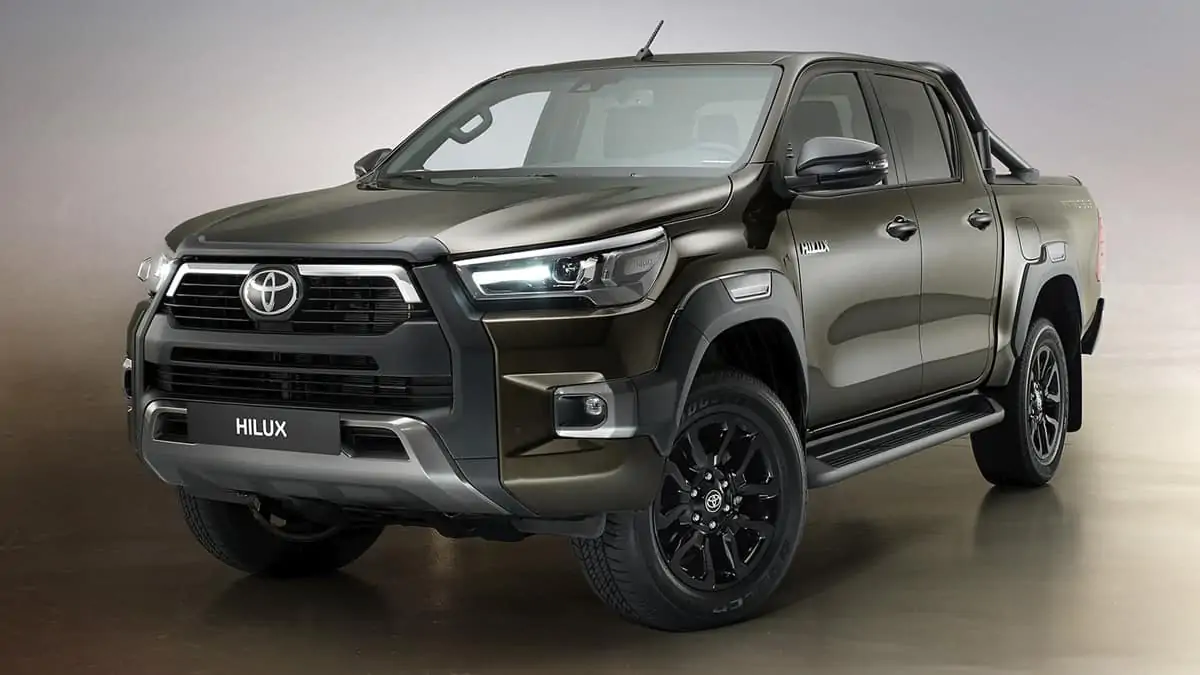While many trucks today are highly luxurious, Toyota was among the first manufacturers to identify the appeal compact pickup trucks had to retail buyers and increased its truck’s interior comfort and features.
In doing so, Toyota created the Hilux, a combination of “High” and “Luxury,” abbreviated and merged to form one of the world’s most durable, versatile, reliable, and popular mid-size pickup trucks.
Reliability, durability, versatility, and comfort are factors every American looks for in a pickup truck. However, though the Toyota Hilux offers all four, why can’t you buy one in America?
Why Is The Toyota Hilux Banned In The US?
While the United States hasn’t technically banned the Toyota Hilux, and you can still import one from elsewhere in the world if you want to, the introduction of the Chicken Tax has made this option less ideal.
What is the Chicken Tax, and why does it affect the Hilux? Here’s a brief explanation.
During the early 1960s, Europeans became highly annoyed at how quickly poultry farmers in America churned out and exported chickens. As hard as Europeans tried, they could not compete with their American counterparts.
There were accusations of impropriety at some point, leading to the situation escalating further. Eventually, West Germany and France introduced a tariff on American chicken meat.
In retaliation, President Lyndon B. Johnson imposed a 25% tariff on imported brandy, potato starch, dextrin, and light trucks. This tariff became known as the Chicken Tax. Its purpose was to protect American manufacturers and producers from what the president saw as unfair foreign competition.
Though there were diplomatic attempts to prevent the Chicken Tax from being imposed, the Cold War-era tensions hindered any success.
Since its introduction, foreign automobile manufacturers have had to pay a fortune to export light trucks to America. However, businesses have made a few innovative attempts to work around this tariff.
The History Of The Toyota Hilux
Toyota first introduced the Hilux in Japan in 1968. Back then, the truck had a short wheelbase and a 1.9-liter engine, only producing 84hp. It also came standard with a four-speed manual transmission and rear-wheel drive. Several Toyota Hilux generations came after that.
Second Generation
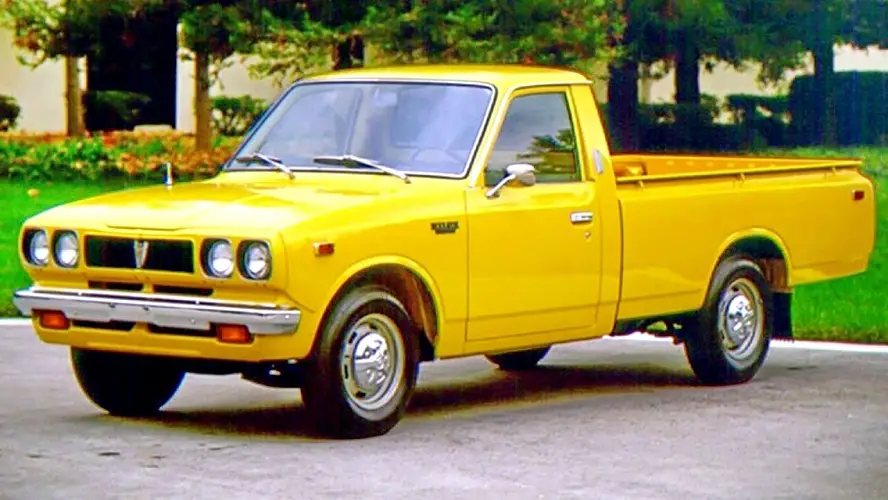
With its production running from 1973 through to 1974, the second-generation Toyota Hilux had a longer wheelbase and a slightly larger 2.0-liter engine that achieved 109hp.
As the three-speed automatic version became popular in Japan, Toyota introduced a new model in America. Known simply as “The Truck,” it had a 7.4-foot truck bed.
Third Generation
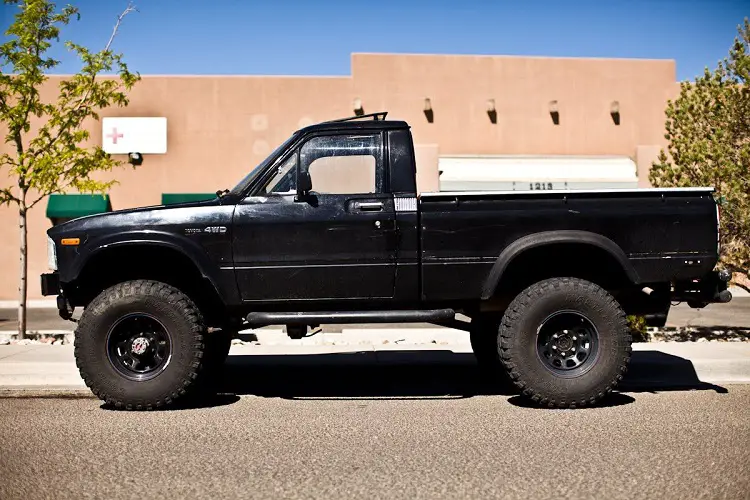
1975 saw the introduction of the third generation of the Hilux. While this model had a larger 2.2-liter engine, at only 97hp, it produced less horsepower than its predecessor because of the increase in weight and body size. The model also had an optional five-speed manual transmission.
Despite its reduced power, the third generation Toyota Hilux reached its millionth sale towards the end of 1977, helping the company solidify its position in the compact truck segment.
Fourth Generation
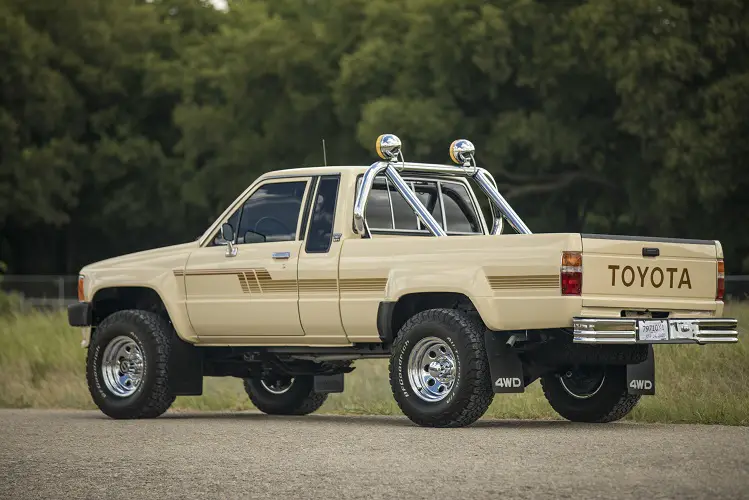
Two years later, Toyota introduced the fourth generation Hilux, which came with the option of a 4WD model and the L Series diesel engine on 2WD models. The manufacturer also made changes in the truck’s design.
Fifth Generation
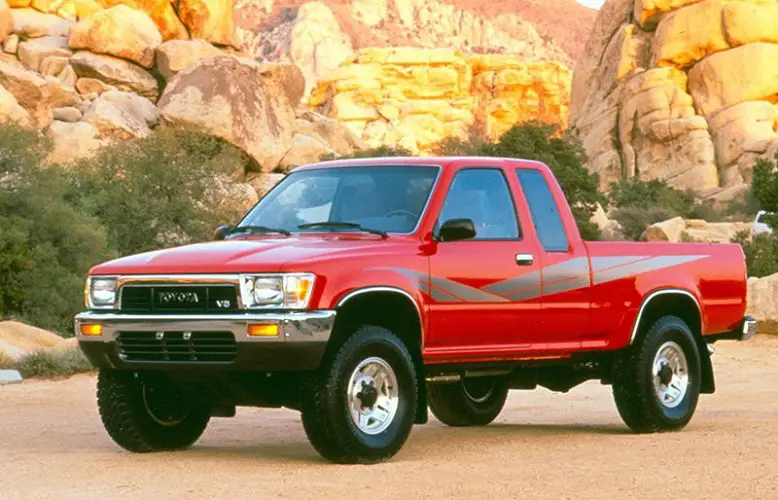
In 1984, the company released the fifth generation, which featured even more changes, including a new, fuel-injected 2.4-liter engine capable of producing 105hp. Buyers also had the option of choosing a turbocharged 2.4-liter engine.
The fifth-generation saw the end of the four-speed manual transmission and introduced three and four-speed automatic options.
Sixth Generation
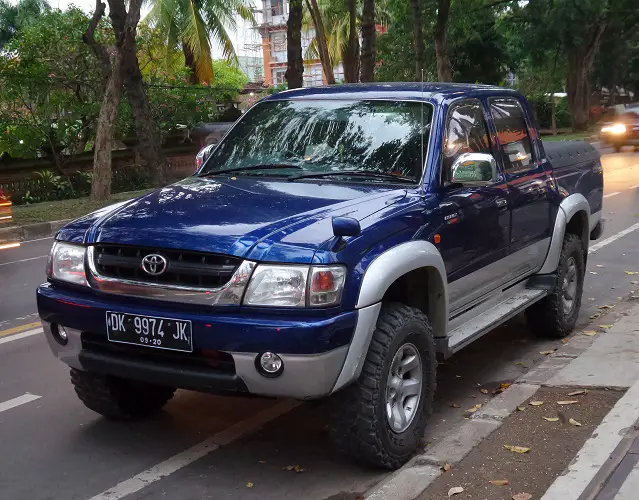
Running from 1989 to 1994, the sixth generation Toyota Hilux had a longer wheelbase and used the company’s award-winning Xtracab SR5 and a 3.0-liter V-6 engine. Toyota’s improvements to the model saw the Hilux win its first “Truck of the Year” Motor Trend award in 1989.
Seventh and Eight Generation
With the sixth generation’s continued success, it would not be until 2005 that Toyota introduced the seventh generation of the Hilux. This version had two new engine line-ups, the 2.7 and 3.0-liter turbo diesel engines, with the latter being more energy-efficient on the highway and more off-road capable.
Buyers could also opt for a more powerful 4.0-liter V-6 engine with fuel consumption similar to the 2.7-liter version.
The eighth-generation featured smaller 2.4 and 2.8-liter turbo diesel engines and an optional 2.7-liter i4. While the 2.4 and 2.7-litre engines come in either a 6-speed manual or automatic transmission, the bigger engine only has a 6-speed automatic transmission.
Why Is The Toyota Hilux So Popular Around The World?
While there are many reasons why the Toyota Hilux is immensely popular worldwide, high on that list are its versatility, capability, and unrivaled reputation for durability.
On top of that, Toyota offers the Hilux in a wide variety of body styles, with various powertrain options appropriate for different markets. The prices also range from affordable to expensive, making it easier for you to get your hands on one regardless of your budget.
Innovative Loopholes
When there is profit to make, big businesses often find a way around things. Over the years, there have been several loopholes in the tariff regime that companies have exploited.
For instance, even though Ford and Chevy are two American automobile manufacturers the Chicken Tax intends to help, they came up with the “chassis cab” loophole that Jimmy Carter put an end to in 1980.
The loophole allowed foreign-made trucks to be imported and sold in America with only a 4% tariff if the truck had a passenger compartment and no cargo bed or box. Once the vehicle was in the USA, the manufacturers would install a cargo box or bed on the vehicle and sell it as a light truck.
That wasn’t the only loophole manufacturers attempted. Remember the Subaru BRAT pickup with “open-air” seats in the bed? These “open-air” seats allowed the manufacturer to pass the vehicle off as a passenger car and not a truck.
Even the Ford’s Transit Connect vans are built in Turkey and imported into the USA fully configured with back seats to gain classification as “passenger vehicles” and thus are exempt from the 25% Chicken Tax, similar to the Subaru BRAT.
Ford then strips the vehicle’s rear seats and a few other parts at their plant and then ships them out to their dealers around the country, selling them as cargo vans.
Other companies like Nissan and Toyota opted to build truck factories in America. By doing so, the manufacturers avoided paying the tariff and could still sell their trucks to the American public.
Why The Chicken Tax Affects The Toyota Hilux
The Chicken Tax affects the Toyota Hilux only for one reason: the Hilux is a light truck built outside America.
Though Johnson did not introduce the tax to stop Americans from buying the Hilux specifically, the truck has become the most notable product to fall foul of this law.
Even more surprisingly, the government lifted the tariffs applied to potato starch, brandy, and dextrin long ago. Only the tariff on cargo vans and foreign light trucks remains in place.
You can still buy a Toyota Hilux in America. However, when you include all the associated costs of importation, like the 25% Chicken Tax, you end up with a compact truck that will cost a lot more than a new Toyota Tacoma. If that weren’t enough, you’d still lose a ton of money on the truck should you choose to sell it in the future.
Will The Toyota Hilux Ever Come Back To The United States?
From the mid-70s until the mid-90s, Toyota sold the Hilux in North America. However, since Toyota introduced the Tacoma in 1995, the Hilux hasn’t been available in the country.
However, reports suggest that the Toyota Hilux will soon return to the US markets. Some reports state that a Hilux packing a third-generation turbo diesel engine could be sold in America soon, with the truck offering improvements in torque, efficiency, and power.
While it’s still early to tell, many people are getting their hopes up, considering how surprising it would be to see the popular Toyota Hilux on sale at dealerships across the country. After all, which truck enthusiast doesn’t want to get their hands on a mid-size pickup truck that has garnered an indisputable reputation of being essentially indestructible?
Conclusion
Can you buy a Toyota Hilux in America? The short answer is yes. However, with affordability being a significant deal-breaker for many consumers, purchasing a Hilux at the moment would prove financially unfeasible.
All told, unless the Toyota Hilux does, in fact, come back to factories in the United States to get around the Chicken Tax, buying one as an American, while possible, likely isn’t worth the high price and massive headache likely to come with it. Perhaps other nigh-indestructible trucks will appear to take the Hilux’s place.

Garry is the happy owner of a funky 2018 Nissan Juke Ti-S AWD. After growing up around his family’s mechanics shop, he is passionate about bringing budget-friendly car care to every driver. Garry has a business degree and is a car enthusiast.

